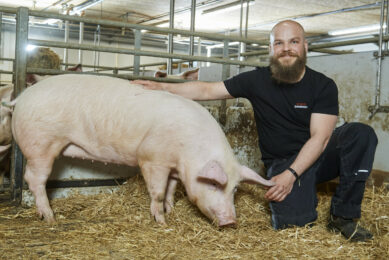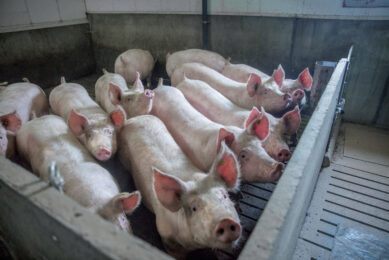CT scans for boars: one small step for the geneticist…
Only recently, a pig genetics company announced the use of CT scans in the ongoing process of pig carcass quality improvement. Enhanced ‘designer’ stock would allow pig producers to recoup premium prices – and other benefits are also to be expected.
Did you see the recent news item from the UK breeding company, JSR Genetics? Quite a modest release as these things go, but I suggest it is of considerable importance.
What is a CT scan? It is X-ray computer tomography. Now I’m sure you have seen those rather frightening pictures of hospital patients being slid into a scanning tunnel to reveal any malfunction in their brain – or not, if they are lucky. Geneticist Grant Walling, JSR’s technical director, reports that the same CT scanning process is now being used in JSR’s selection process for breeding boars.
Brains
“But do we need to know about boar’s brains?,” would be an immediate and understandable response! No, of course not, but the same process can be used to achieve a very accurate prediction of carcass composition.
Information is gathered from a low-dosage X-ray beam passing through the animal’s body from a variety of angles. This registers the amount of muscle, fat and bone as different shades of colour.
Dr Walling writes, “The improvement in prediction in carcass muscle, fat and bone is 6.4, 5.6 and 15% respectively.”
Economics
If the geneticists can improve the former and reduce the latter two traits by these amounts from the male contribution to the finished carcass, then this must markedly improve the economics of the processors and retailers when pig producers supply them with pigs obtained from such improved selection. Hopefully the pig farmer would then recoup a premium price from supplying such ‘designer’ stock.
But there are two further benefits. “Selection by pig geneticists,” says Dr Walling, “‘has traditionally focused on traits relatively easy to measure in the live animal, for example growth rate. CT scanning goes on to differentiate muscle yield within the different primal cuts (loin, ham, belly and shoulder).”
Slaughter for data collection
Secondly, and in this respect, historically breeding companies have had to use carcass dissection data with the disadvantage of needing to slaughter animals prior to data collection. CT scanning allows this valuable information to be collected on live animals (under anaesthetic) which can then go on to be used for breeding.
If this can be taken as one small step for the geneticist – I guess this must be a significant leap for the whole pigmeat industry.











